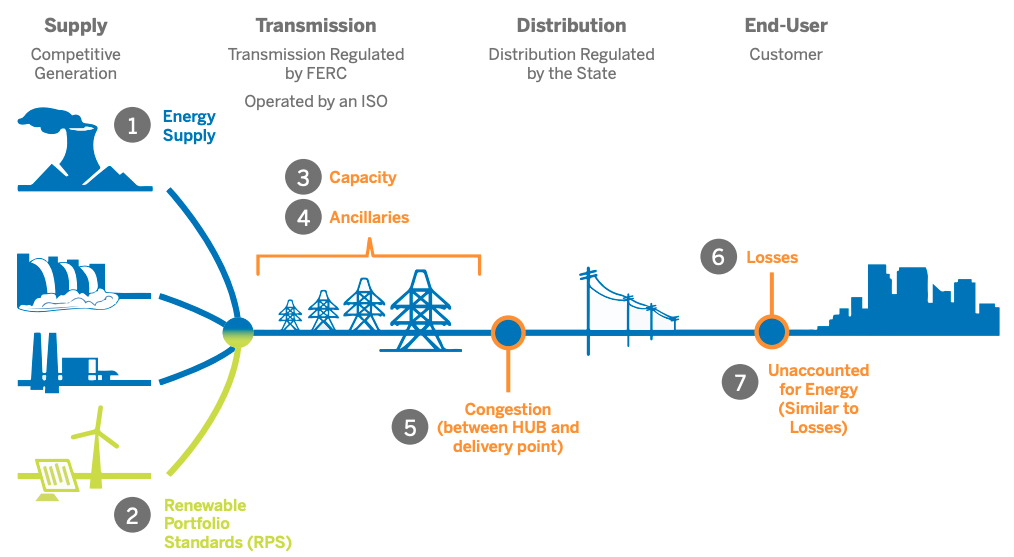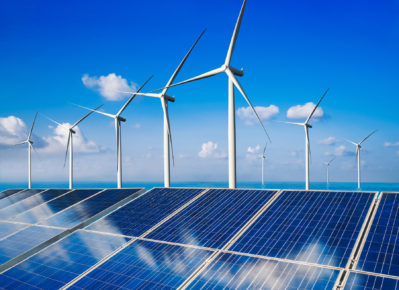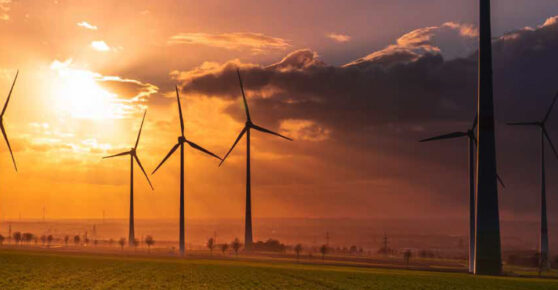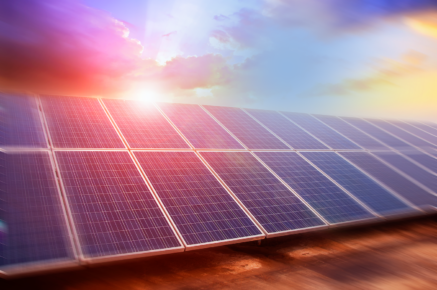Understanding Electric Cost Components
Do you understand your electric bill? In non-competitive markets, charges are typically “bundled.” In competitive markets, charges are “unbundled” and fall into the categories of generation (also known as supply), transmission and distribution. Learn more about the components of your electric costs in the chart below.
Supply:
The production of energy by power plants, which makes up the largest portion (60-70%) of the overall energy price.
- In states with traditional monopoly utilities, rates must be approved by the Public Service Commission.
- In states with retail choice jurisdictions, wholesale power producers compete for power supply market share. Businesses and consumers select a retail supplier and can negotiate price, term, and supply product.
Transmission:
The middleman between power generation and distribution. It is the movement of electricity over long distances through interconnected lines that form a network, known as the grid.
- Transmission costs vary depending on many factors, such as capacity and weather, which can affect demand for electricity and the need for upgrades. Learn more about transmission costs.
Distribution:
Lines, poles and transformers owned by utility companies or independent entities that distribute energy over shorter distances, from regional transmission operators to homes and businesses.
- The transfer of electrical energy between power plants, substations and consumers is impossible without some energy loss. The EIA estimates about 94 megawatts of every 100 megawatts is delivered to the end user and about 5 percent is lost nationally each year, most of which is in distribution.
To learn more about solutions for managing your company’s electric costs, contact us.


























